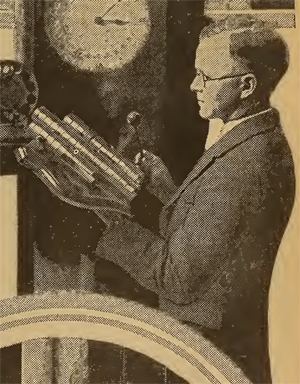deagan military dinner call no 3003
It is not known exactly when WSB began using chimes, but the November 11, 1922 issue of Radio World mentions “the big gong which rings ‘Bong! Bong! Bong!’ ” to announce the station, in an article telling the reader how to identify various broadcasters by specific characteristics. Thus, we have a printed reference to WSB using chimes from within eight months from the time the station began broadcasting on March 15, 1922.

But the December 16, 1922 issue of Radio Digest shows a picture of the WSB chimes taken in October of that year—some six and one half months after WSB began. In addition, the Radio Digest issue of August 16, 1924 contains a profile of Lambdin Kay that was most likely ghostwritten by Kay himself; about his accomplishments, the article asserts that he
“…thought up ‘The Voice of the South’ as the world’s first radio slogan, likewise three–note chime as first identification signal; likewise WSB 10:45 Radiowls as first aerial fraternity”.
The issue of Radio Digest for September 13, 1924 has a profile of WSB with pictures of some of its key staff members. As reproduced to the right, one of the illustrations accompanying the article is that of Lambdin Kay, standing before a large clock and a Western Electric microphone, holding a three–note set of Deagan tubular chimes. This is a Deagan Military Dinner Call No 3003, which was unlike the four–note 200 set that would eventually become the station’s trademark.
The way the chime tubes are normally arranged on the 3003, the “Over There” notes could be obtained by striking them in order from right to left; however, the illustration shows the chime tubes arranged in reversed form, which seems to indicate that Kay switched the left and right chime tubes, perhaps to make it easier for others on staff to sound them correctly. This particular Deagan chime was pitched at A=430Hz, and had tubes tuned to D5, A4, and F♯5, with the lowest note in the center, flanked by the next higher notes left and right; thus, striking them in 2–3–1 sequence will give the same triad arrangement as G–E–C. (Clicking on the image will bring up a large version.)